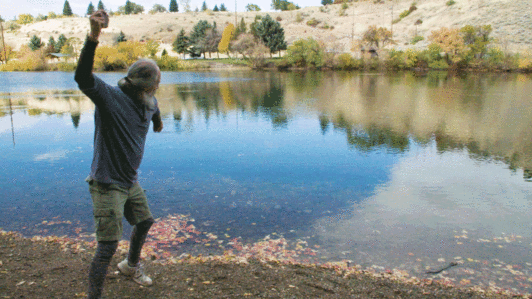Skipping stones across water has fascinated humans for millennia, but incredibly, we’re still uncovering the physics of this game today. A recent paper built and experimentally validated a mathematical model of a spinning, skipping disk. The authors found that, in order to skip, a stone needs to generate upward acceleration greater than 3.8 times gravity.
To get that lift, the stone needs both the Magnus effect and the gyro effect. The Magnus effect is an aerodynamic force generated by an object spinning in a fluid that curves it away from its direction of travel — it’s what curves a corner kick into the goal in a soccer match. The gyro — or gyroscopic — effect also has to do with spinning, but it’s a result of conservation of angular momentum. Essentially, when you try to shift the axis that a rotating object spins around, there’s a force that resists that change. (The classic demo for this uses a spinning bicycle wheel.)
In stone skipping, the gyro effect helps stabilize the stone’s bounce and, if it’s spinning fast enough, keeps its direction of travel straight. Once the stone’s spinning slows, the Magnus effect can start to curve its trajectory. (Image credit: B. Davies; research credit: J. Tang et al.; via Physics World; submitted by Kam-Yung Soh)




